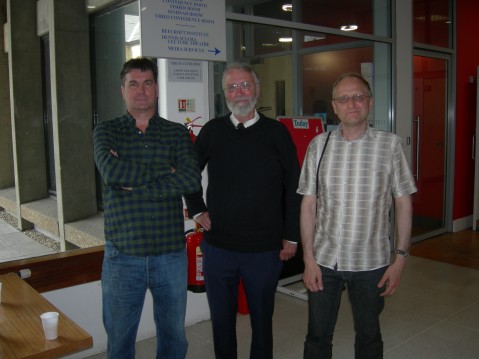Highlights from ZooCon 2015
Today we have a guest post from Andy Martin, one of our dedicated Planet Four Talk moderators, who attended ZooCon 2015 in Oxford, UK on July 11th. In a previous life as a chartered chemist, Andy tested the air at the House of Commons, assessed the quality of food, water and nuclear fuel testing, and worked on standards for breathalysers and dairy farm milking parlours. He now runs a campsite in Cornwall where there are lots more stars to stargaze at in the night sky than there were inside the M25. The photos accompanying the blog come from Planet Four volunteer Pete Jalowiczor. Pete has a background in Astrophysics; he was one of Prof. David Hughes’ Postgraduate students at the University of Sheffield, UK in the early ’90s researching Halley’s comet. He currently works in education assisting students in Further and Higher Education with learning difficulties.
And so to Oxford for Zoocon 2015, ably led by our master of ceremonies Grant Miller. The days events are available to view (the video of the talks can be found here) at so I’ll stick to a few highlights rather than provide minutes on the meeting.
First up Becky Smethurst gave an up date on Snapshot Supernova which ran earlier this year in association with the BBC and Stargazing Live. The project had been a great success and have caught 5 supernovas in the act of going bang. Whilst the supernovas were the stuff of “proper big science” Becky was just as pleased with the results of the group photo experiment to image Orion This saw images of Orion taken by the public combined to provide a stunning image of the constellation, which you can see here data.zooniverse.org/orion/all_stack_wide_step_number_1567 (NB I found this with some difficulty, the beeb websites just loop when you start looking)
Ali Swanson next, all about Snapshot Serengeti which, amongst the delegates at least, seems to be a bit of a Marmite group, but everyone seems to have had a go, love it or hate it. The project has produced a paper and all the data collected to date has been made freely available to all, that’s around 1.2 million photos.
Victoria Van Hyning gave an interesting presentation on the humanities led projects which mainly center on the transcription of historical documents. You may already be aware of the War Diaries and sea logs projects but did you know you could help to transcribe ancient documents written in Greek (no ability to actually understand Grek required) via the Ancient Lives project. Another project that I wasn’t aware of, but will be on the lust when I get some time, is Science Gossip. This involves a variety of scientific documents like the lab books and journals of working scientists.
Alissa Bans and Disk Detectives are identifying stars with disks around them where planets may be forming; YSO’s or Young Stellar Objects. So far around 700 disk candidates have been identified some around close to home stars such as Vega.
Tom Hart has a cool job in more ways than one, he looks after Penguin Watch which monitors penguin populations using both satellite imaging and trail cameras similar to those used for Snapshot Serengeti. Because of the extreme weather conditions and remoteness of the locations the team are working on cameras which will be able to stay in the field for up to 10 years without being touched. The project has already seen some success in getting fishing restrictions imposed to protect penguin populations.
Zooniverse Past and Future ran over what’s been happening in the Zooniverse and what may yet come to pass. There has been a paper published discussing ideas for citizen science in astronomy and the recent Earthquakes in Nepal saw the power of the Zooniverse used to identify areas where aid was needed but not being delivered, literally because the places affected were not on the map.
And finally back to Grant with what I think is the most exciting development for the Zooniverse yet. The new platform enables anyone to set up and manage Zooniverse project of their very own. To show how easy this was Grant set up a project to identify attendees at ZooCon15 from photographs and measure the size of their smile. This he did in a couple of hours whilst the talks were going on. To find out more log on to the Zooniverse and look for the Build a project’ button top right.All I need now is a huge pile of data to analyse.
And thence to the pub to renew aquantancies and make friends anew. Sadly the mild ran out early on but those who dined found their meals accompanied by designer new potatoes, purple all the way through, which tasted……just like potatoes.

Planet Four representing at ZooCon 2015 Left to right: Andy Martin, Pete T, and Pete Jalowiczor (Thanks to Pete Jalowiczor for the photo)






Good report.